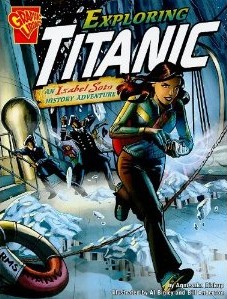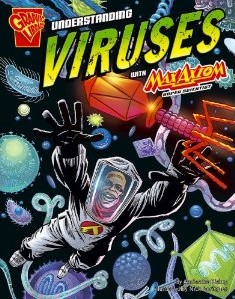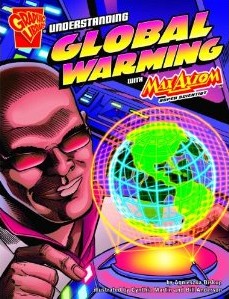The debate about global warming appears to be pretty much over. A majority of climate scientists now agree that it’s occurring and there seems no end to the accumulating evidence that rising temperatures are causing changes all over the planet.
The yellow jacket population in Alaska, for example, has undergone a significant increase during the past decade. One effect of the insect’s growing numbers is that in 2006, Fairbanks experienced its first two sting-related deaths. “We think warmer temperatures are allowing the insects to thrive,” says Jeffrey Demain, director of an allergy immunology center in Anchorage. Demain presented his findings in March in Philadelphia at the annual meeting of the American Academy of Allergy, Asthma and Immunology.
Another symptom comes from plants: Leaves are emerging earlier in Eurasia’s northern forests in the spring. Researchers in France, the United Kingdom, Japan and Russia reported the finding in the March Global Change Biology. When leaves pop out depends largely on temperature in the northern hemisphere.
And some marine mammals may need special government protection because the icy environment they depend on is melting away. For instance, on March 26, the National Oceanic and Atmospheric Administration announced it was considering whether to list four types of seals as species threatened or endangered with extinction. At issue: Arctic sea ice is melting rapidly and could disappear entirely during polar summers fairly soon. Ribbon, bearded, spotted and ringed seals-the species in question-rely on sea ice for spots on which to rest, to mate and to have pups.
A second federal agency, the U.S. Fish & Wildlife Service, is evaluating whether polar bears should be listed as a threatened species for similar reasons. These bears are completely dependent upon Arctic sea ice for their hunting grounds.
But the warming is affecting more than seals and polar bears. “There’s going to be a widespread impact on the whole ecosystem of the Arctic, and the whole world,” says Walt Meier, a research scientist who studies Arctic ice at the National Snow and Ice Data Center in Boulder, Colo.
Why is our planet running a fever? That’s what scientists are investigating, and some of their findings are disturbing. But there are things that the public can do to potentially bring down that fever. Even kids.
understanding earth’s fever
At its simplest, global warming is the rise in the average temperature of Earth’s atmosphere. Since the 1950s, the planet has been experiencing a warming trend.
In a convincing set of reports issued last year by the Intergovernmental Panel on Climate Change (IPCC), scientists argued that it’s very likely that this warming trend has been caused by an increase of carbon dioxide and other greenhouses gases in the atmosphere. (See below: “Global Warming and the Greenhouse Effect.”)
The reports also blamed people and their actions for much of the increase in levels of these gases in the atmosphere. For instance, the IPCC linked increasing amounts of carbon dioxide-the most important of the greenhouse gases-primarily to humans’ use of fossil fuels, such as coal, oil, and natural gas.
The IPCC reports show that all but one of the years between 1995 and 2006 rank among the 12 warmest since 1850. That’s when scientists first began measuring surface temperatures across the globe. During the past century, the planet’s average temperature has risen about 0.74° Celsius (or 1.33° Fahrenheit). Satellite data since 1978 show that annual average Arctic sea ice has shrunk by 2.7 percent per decade. In addition, mountain glaciers and snow cover have declined all over the world. These decreases are all consistent with global warming.
Shrinking Arctic sea ice and retreating glaciers are both key and quick-responding indicators of global warming, says Meier. Long ago, coal miners brought caged canaries into their mines as a type of early-warning signal. If the birds died, it meant that toxic gases were building up in the mine, and that the workers were in trouble. Some scientists now view what’s happening to glaciers and Arctic ice as the climate equivalent of canaries in the coal mine. Once sea ice and glaciers begin to undergo serious melting, Meier says, “You know you’re having some kind of climate change.”
changes to the planet
The IPCC reports predict that by 2100, Earth’s average global temperature will have climbed by anywhere from 1.1 to 6.4° C (2 to 11.5° F). But global warming is about more than just temperature, says Susan Solomon. She’s a senior scientist at NOAA in Boulder, Colo., and led one of the IPCC working groups.
“We’ll also see changes in drought and rainfall, which will affect our ability to grow food,” Solomon says. “[Global warming] is about extremes of temperature and rainfall, and there are a lot of open questions about, for example, whether hurricanes become more intense as you have a warmer world.” What there’s no question about, she says, is that when climate changes, people will be affected.
Heavy rainfalls, warm spells and heat waves will all very likely become more common than they are today, the IPCC reports say. Heat waves can be deadly, especially for the very young or very old. The heat wave that struck Europe in 2003, for example, killed thousands of people.
Global warming also affects sea levels. As temperatures climb, glaciers and portions of the polar ice sheets start to melt. The glaciers’ melting will swell the size of Earth’s oceans, increasing their depth. Moreover, as ocean water warms, it expands, which makes it take up even more space.
Melting ice and expanding seawater are already making sea levels climb about 3 millimeters (one-eighth of an inch) each year, according to the IPCC reports. If sea levels continue to rise, coastal cities and small island nations will be in trouble. Some areas could become submerged. Remaining low-lying regions could be at risk of flooding during storms or a scouring away by waves along the coasts.
The environment could also suffer dramatically. Plants, insects, birds and other animals could lose their homes or sources of food. And, Solomon says, “There’s evidence that changes in temperature and other climate variables can cause extinction.”
The loss of Arctic sea ice will affect more than wildlife, says Meier. “The climate system is all interconnected,” he notes, “so you’re going to see changes in ocean currents, in winds and in weather patterns.” People throughout the world, but especially in the Northern Hemisphere, should expect to experience some impacts, he warns.
Disappearing sea ice will also add to the warming trend, Meier says. Because snow and ice are white, the Arctic acts like a big mirror-it reflects a lot of the sun’s rays. When you remove the ice through melting, you expose more ocean. Because the water’s very dark, almost black, it reflects less of the sun’s energy, and absorbs more of it. This leads to still more warming, which leads to still more ice melting, and so on.
So once this process gets underway, “you have the potential for the loss of sea ice to accelerate and for this to contribute even more to global warming,” Meier says. A warmer ocean can transfer its heat, he adds, further warming the atmosphere.
what to do
Global warming is a serious issue affecting the entire planet. But people working together can find answers to environmental problems. The IPCC reports offer recommendations for government leaders on ways to reduce fossil-fuel use, thereby reducing carbon-dioxide emissions. One way: begin substituting alternative energy sources, such as solar, wind, tidal and wave power for the burning of oil, gas and coal.
Solomon says that it’s important “to get involved in the issue, understand the issue and express your opinions, and get your family to express their opinions to [government leaders]” in Washington D.C. and elsewhere.
Even kids can have an impact, prompting changes within their families. Transportation-cars, trucks and airplanes-contribute a large share of carbon dioxide into the air, Solomon says. So one way to limit those emissions would be to encourage your family to walk or ride a bike for simple trips. You might also encourage your parents to buy a car that sips gasoline, not a vehicle that guzzles it. And remind your family that running several errands at one time will result in fewer car trips and less greenhouse-gas pollution.
Anything kids can do to conserve energy and avoid releasing extra carbon dioxide helps, Meier adds. This includes everything from installing energy-efficient compact-fluorescent light bulbs to turning down the thermostat (put on an extra sweater to stay warm). “If you get enough people working together, then you definitely start making a difference,” he says.
Keep in mind, Solomon points out, that what people do today could “affect the lives of their children and of their children’s children and the children of their children’s children.”
Overall, Solomon concludes, if countries around the world don’t reduce emissions of carbon dioxide, “the world will get a lot warmer in the next hundred or even maybe several hundred years. We have to decide whether we want to live in that world.”
global warming and the greenhouse effect
Earth’s atmosphere works something like a giant glass greenhouse. As the sun’s rays enter our atmosphere, most continue right down to the planet’s surface. As they hit the soil and surface waters, those rays release much of their energy as heat. Some of the heat then radiates back out into space.
However, certain gases in our atmosphere, such as carbon dioxide, methane and water vapor, work like a blanket to retain much of that heat. This helps to warm our atmosphere. The gases do this by absorbing the heat and radiating it back to Earth’s surface. These gases are nicknamed “greenhouse gases” because of their heat-trapping effect. Without the “greenhouse effect,” Earth would be too cold to support most forms of life.
But you can have too much of a good thing. Carbon dioxide is released when we use fossil fuels, such as coal, oil and natural gas. We burn these fuels, made from the ancient remains of plants and animals, to run electricity-generating plants that power factories, homes and schools. Products of these fossil fuels, such as gasoline and diesel fuel, power most of the engines that drive cars, airplanes and ships.
By examining air bubbles in ice cores taken from Antarctica, scientists can go back and calculate what the concentrations of carbon dioxide in the atmosphere have been throughout the last 650,000 years. The amount of carbon dioxide in the atmosphere has been climbing to where today it is 30 percent greater than 650,000 years ago. That rise in carbon dioxide “is essentially entirely due to the burning of fuels,” Susan Solomon says. She’s a senior scientist with the National Oceanic and Atmospheric Administration, in Boulder, Colo., and studies factors that affect climate.
Humans have further increased the levels of greenhouse gases in the air by changing the landscape. Plants take up carbon dioxide to make food in a process called photosynthesis. Once cut down, they can no longer take in carbon dioxide, and this gas begins building up in the air instead of fueling the growth of plants. So by cutting down trees and forests for farmland and other human uses, more carbon dioxide is also added into the atmosphere.
“We’ve always had some greenhouse gases in the atmosphere,” Solomon says. “But because we’ve burned a lot of fossil fuels and deforested parts of the planet, we’ve increased the amount of greenhouse gases, and as a result have changed the temperature of the planet.”
This article appeared in the May 5, 2008 issue of the online science magazine Science News for Kids.
 My second of two books in the How It Works series. It expalins the science of football — tackling, passing, running, and punting. Published by Capstone Press. A Junior Library Guild Selection, Spring 2010.
My second of two books in the How It Works series. It expalins the science of football — tackling, passing, running, and punting. Published by Capstone Press. A Junior Library Guild Selection, Spring 2010.





